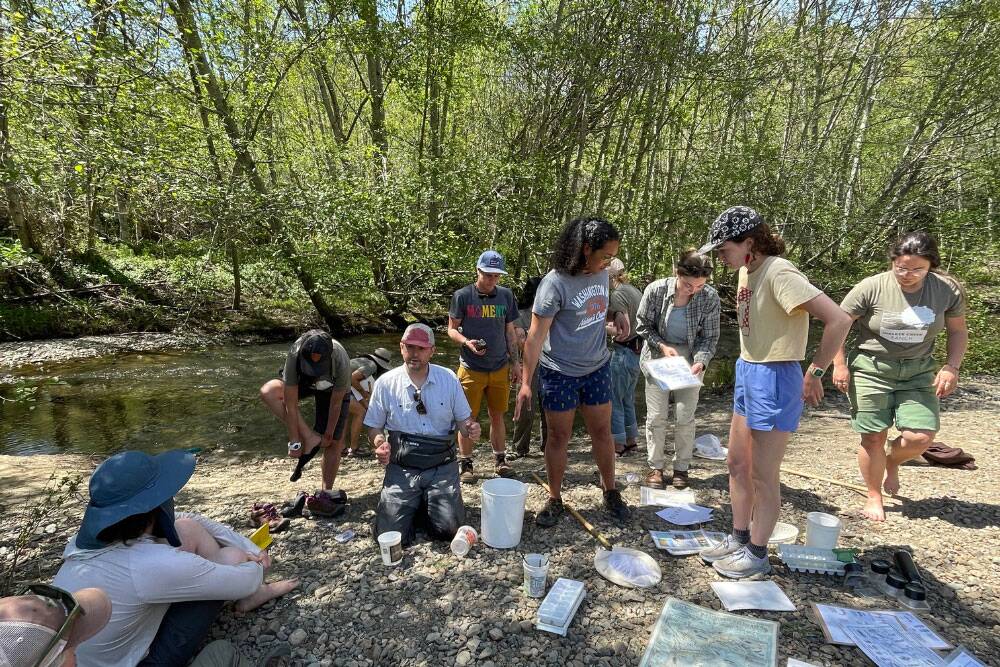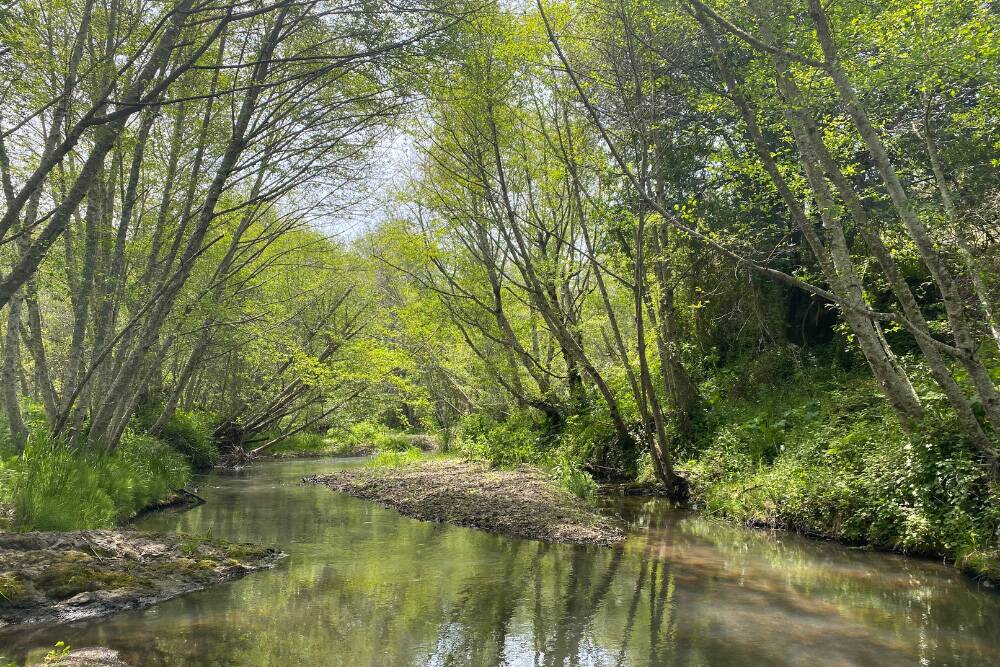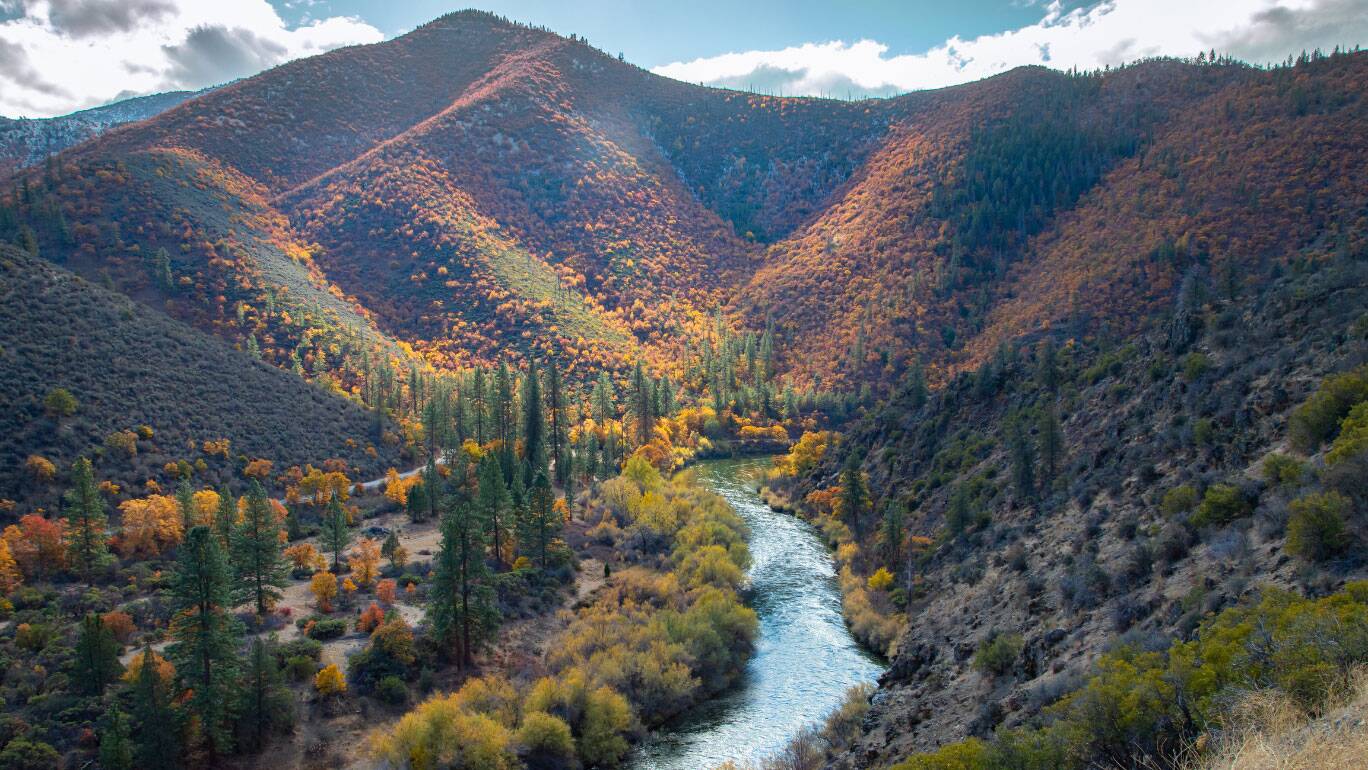Fish, water, and people: a seemingly well-defined set of elements that fit together as a biological community that we call an ecosystem.
But the complex web of interconnectedness that fish, water, and people form doesn’t end just with them. The other unseen building blocks of this triad’s shared survival are more implicit. Waters need to flow, people need air to breathe, and salmon need shelter, cold free flowing waters... and bugs! Invertebrate populations and their implications for watershed and fish population health form a large component of CalTrout’s research work in different project areas. We ask questions like: where will the most bugs grow? If these bugs grow, will salmonid populations, do this, or that? Why are there more or less of certain bugs in various water temperatures or locations?We look at macroinvertebrate populations as a part of the whole food web that supports salmonid populations. Instead of thinking about habitat restoration as just revegetation, or barrier removal, we can think about restoring the food web as an essential component of habitat. This is something that Rob Lusardi, Ph.D., CalTrout and UC Davis aquatic research ecologist, explores with a robust team of researchers as part of his work with the Freshwater Ecology Lab at UC Davis.
Today, I have the opportunity to spend a day looking at bugs at Walker Creek Ranch with Rob Lusardi along with Walker Creek Ranch and CalTrout staff. Walker Creek Ranch is a retreat center and outdoor school in West Marin County. Established in 1990, it is much beloved in the hearts and minds of the many students and families who have come through its wild doors. Today we are going to meet Walker Creek Ranch’s newest cohort of naturalist-educators for a training conducted by Rob on stream ecology.

Students fish for bugs in Walker Creek.
CalTrout’s partnership with Walker Creek Ranch is rich in so many ways – in learning, in action, and in vision. Besides the research and monitoring project on the creek, CalTrout also provides scientific expertise to expand the use of salmon as a curriculum focus for the outdoor school... which is why a long day of looking at bugs with naturalist-educators in Walker Creek awaits us!
I arrive at Walker Creek after an enigmatically Californian drive through rolling green hills speckled with bursts of wildflower blooms. Rob is joined by Sarah Howe, junior specialist from the Freshwater Ecology Lab, and they are already sitting in the sun with a group of around 20 naturalist-educators. These educators bring a passion for the natural world combined with backgrounds in education - they mentor the many groups of students who attend Walker Creek Ranch throughout the season. CalTrout Bay Area Regional Director Patrick Samuel, and Walker Creek Ranch Outdoor School principal Patrick MacLaughlin are in attendance as well, and after a brief introduction from Rob on the salmonid food web, we weave our way around the circle doing introductions.
Thoroughly sunned, the group heads toward shadier pastures to look for some bugs. As we make our way down to the creek we pass grinding rock, an ancient formation named for the acorn grinding holes that dot its massive face, evidence of the food practices of local Indigenous nations that span tens of thousands of years and include salmon and steelhead.

Dr. Rob Lusardi shows students how to identify different macroinvertebrates.

Students examine the bugs they have collected.
Net full of bugs, we empty it into buckets and then into ice cube trays to separate the different kinds. Rob gives a general overview (which includes a thorough use of animated hand gestures to mimic predator behavior or strangely positioned limbs) of the different categories of macroinvertebrates – shredders, collectors, filterers, predators, and grazers. Using the keys and Rob’s expertise, the naturalists are absorbed in the experiment process, examining aquatic insects and collaborating on their identification. There’s an abundance of black flies, some mayflies, and a few stoneflies. Overall, the diversity in the creek is within the range of expectation, according to Rob, but ultimately, the more diverse and denser the community of macroinvertebrates is, the better for salmonids.
The opportunity to learn together in this watershed is a great gift, as is the opportunity to have this learning passed onto to young people that may become more connected to their local waterways because of it.
To learn more about Rob Lusardi’s work on food density as an important aspect of climate resilience for certain watersheds listen to his 2020 interview here on Northern California public radio.

Walker Creek in Marin County.






